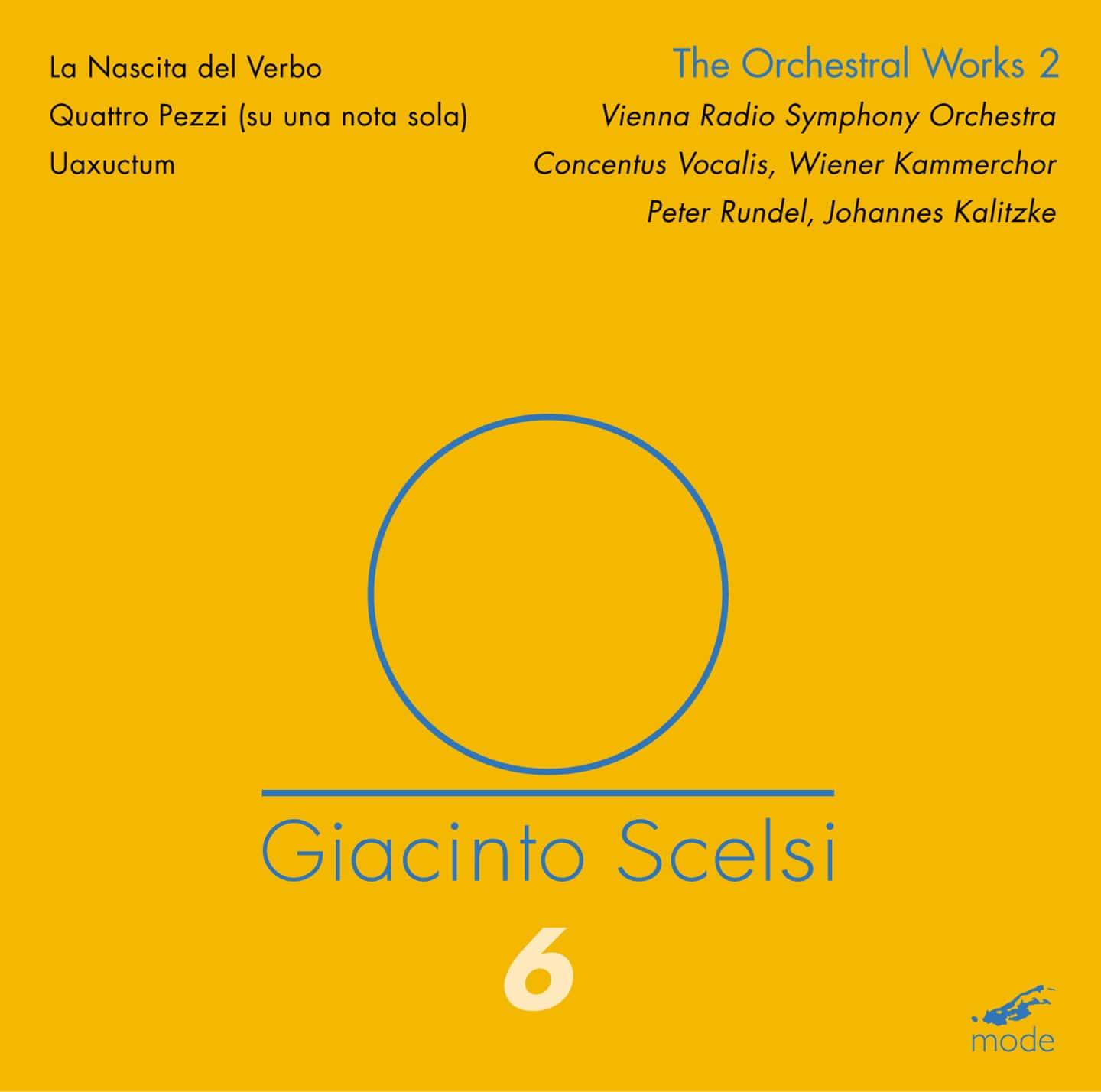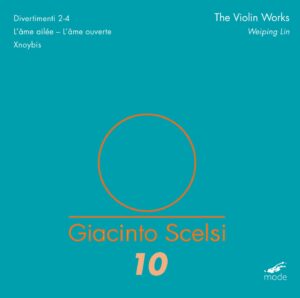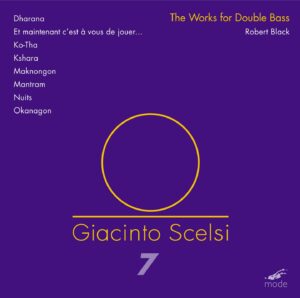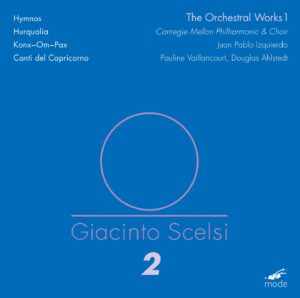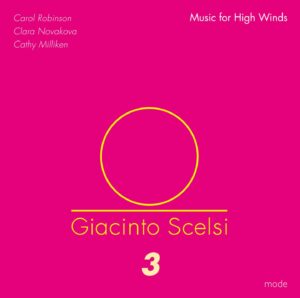Scelsi Edition 6 - The Orchestral Works 2 - CD
The 2nd work for wordless chorus, ondes Martenot, and orchestra; the 3rd work for wordless chorus and orchestra. (viewed Feb. 7, 2013). Concentus Vocalis (2nd work) ; Wiener Kammerchor (3rd work) ; Vienna Radio Symphony Orchestra ; Peter Rundel, conductor (1st & 2nd work) ; Johannes Kalitzke, conductor (3rd work). Recorded in 2005. Previously released as a compact disc.
Quattro Pezzi (su una nota sola) (1959) (16:54)
for 25 musicians
Peter Rundel, conductor
1st Movement (2:56)
2nd Movement (4:49)
3rd Movement (4:27)
4th Movement (4:41)
Uaxuctum-The Legend of the Mayan City which they themselves destroyed for religious reasons (1966) (21:14)
for ondes Martenot, seven percussionists, timpanist, chorus and 23 musicians
Peter Rundel, conductor
1st Movement (6:13)
2nd Movement (3:59)
3rd Movement (3:43)
4th Movement (3:12)
5th Movement (4:07)
Concentus Vocalis, Chorusmaster: Herbert Böck
La nascita del Verbo (1946-48) (31:58)
for chorus and large orchestra
Johannes Kalitzke, conductor
1st Movement (6:34)
2nd Movement (6:00)
3rd Movement (8:09)
4th Movement (11:15)
Wiener Kammerchor, Chorusmaster: Michael Grohotolsky
Vienna Radio Symphony Orchestra
First Recording
The first recording of his 32-minute grand cantata La nascita del Verbo. Steeped in chromaticism, with hints of Scriabin and a sea of percussion, Nascita boasts a vast double fugue (one of the most imposing in the history of music) and a forty-seven voice canon in twelve keys. This work, “truly written in blood,” left Scelsi “in a deplorable state,” afterwards he stopped composing for several years.
One of Scelsi’s infamous pieces is the Quattro Pezzi (su una nota sola). Each piece is limited to one pitch with micro-fluctuations of sound (vibratos, slurs, spectral changes, tremolos…). Because of the nearly total abandonment of harmonics, the listener concentrates on new sonorous subtleties, on the orchestra’s timbre as a whole.
In 1966, he completed the ferocious, tormented, complex Uaxuctum. The myths and mysteries of this Mayan city is reflected in Scelsi’s compositional process: new instrumental and vocal techniques (breathing noises, nasal sounds, muted or inhaled gutturals…), rhythmic incantations, a petrified flow of time. Few woodwinds, a string section consisting of six double basses, lots of brass, and, in addition to a timpanist, no less than seven percussionists!
Hi-resolution 48khz/24-bit recording.
Also available on surround-sound DVD.
(NOTE: the DVD contains no video)
Reviews
Roland Dahinden
Flying White
Mode 175
Composer, trombonist and improvisor Roland Dahinden, born in 1962 in Switzerland, studied with George F. Haas, Vinko Globokar, Anthony Braxton and Alvin Lucier, and has performed with Brazton and Hildegaard Kleeb. On his third Mode CD, Klangforum Wien String Quartet perform quartets written 2000-04, each dedicated to a visual artist – most notably No. 2 (mind rock) for Richard Long. On a purely sonic level, this is an extraordinary listening experience, which seems relatively unaffected by the fact that quartets three and four were recorded using a binaural system in which headphones are preferred. All quartets share a hushed intimacy, with toneless bowing – a skating or rustling sound – perhaps effected by damping the strings and enhanced by close-miking. The worlds of Cage’s ‘number’ pieces and Christian Wolff’s Exercises are in the background, but for Dahinden, sonic beauty enters the equation also.
— Andy Hamilton, The Wire
Roland Dahinden
Flying White
Mode 175
Within an unhurried – some would suggest naïve – style, Dahinden plumbs variety. Chords and tones, often muted, sul ponticello or with hushed expectancy, change at a meandering pace. Dahinden, drawing inspiration from the visual arts, dedicates these works to Richard Long, Inge Dick, Brice Marden and Stéphane Brunner. (Long provided the spark for Dahinden’s piano quintet). I sense different emotional qualities: The Third is the most hesitant, the Fourth slightly depressed, and the Fifth (the longest) calmest. While Feldman made such music possible, we hear no discernable gestures undergoing gentle variation. The impeccable Klangforum Wien plays as one, befitting these broadly monochromatic pieces. I don’t think a plucked note appears anywhere. Two quartets (Third and Fourth) are binaural recordings that via headphones have sounds swirling delicately around the listener.
— Grant Chu Covell, La Folia online review, December 2006
Links
Also by Roland Dahinden on Mode:
as composer:
Naima (mode 62)
Silberen, Lichtweiss (mode 138)
and as a trombonist:
Alvin LUCIER: Small Waves with Hildegard Kleeb (piano) and The Arditti
Quartet. (mode 124)
Christian WOLFF: Tilbury Pieces; Snowdrop. – with Hildegard Kleeb
(piano) and Dimitrios Polisoidis (violin, viola) (mode 74)
Roland Dahinden Profile
Roland Dahinden Online

